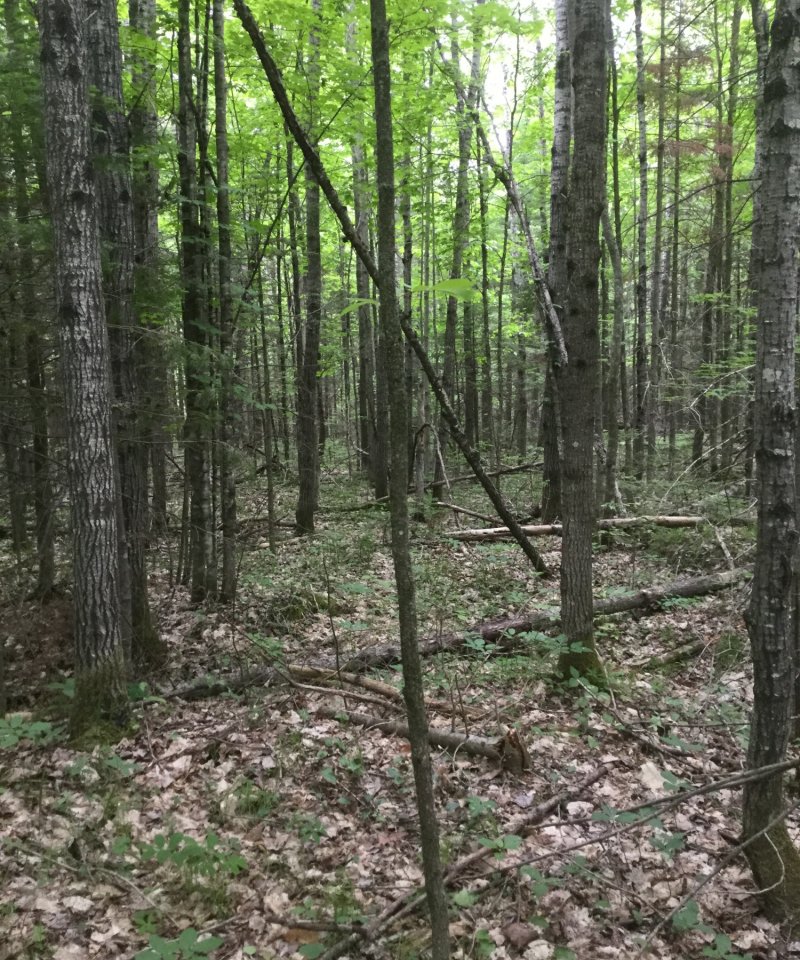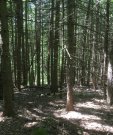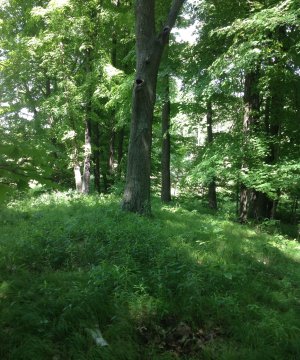Sandy Uplands
Scenario model
Current ecosystem state
Select a state
Management practices/drivers
Select a transition or restoration pathway
-
Transition T1A
Clear cutting or stand-replacing fire.
More details -
Transition T1B
Removal of forest vegetation and tilling.
More details -
Restoration pathway R2A
Disturbance-free period 70+ years.
More details -
Transition T2A
Removal of forest vegetation and tilling.
More details -
Restoration pathway R3A
Cessation of agricultural practices, natural or artificial afforestation.
More details -
No transition or restoration pathway between the selected states has been described
Target ecosystem state
Select a state
Description
Reference state is a forest community dominated by sugar maple (Acer saccharum) with ashes, and various oaks. Depending on history of disturbance, two community phases can be distinguished largely by differences in dominance of tree species and community age structure. The sandiness of the soils composing this site may limit the total growth potential and canopy closure.
Submodel
State 2
Early to Mid-Successional State



Description
Following disturbances such as clear cutting and/or fire a wide range of forest community phases may come into temporary existence, the three most common ones are described in the phases of this state. Variation within this state is largely a product of seed source availability and intensity and type of disturbance leading to the successional state. Due to the sandy nature of the soils in this site; it is more likely that fire could be a part of the disturbance leading to this state.
Submodel
Mechanism
Clear cutting with initial control of competing vegetation, or stand-replacing fire, prepare the site for occupancy by shade intolerant species. This may occur through natural regeneration or by planting.
Mechanism
A period of some 70-100 years without major stand disturbance, especially fire, leads to decreased presence, through natural mortality, of early successional species and the dominance of shade tolerant sugar maple and Hemlock with less tolerant associates of American Beech and White ash, returning the community to Reference State.
Mechanism
Removal of forest cover, tilling and application of other agricultural techniques to grow agricultural crops.
Model keys
Briefcase
Add ecological sites and Major Land Resource Areas to your briefcase by clicking on the briefcase (![]() ) icon wherever it occurs. Drag and drop items to reorder. Cookies are used to store briefcase items between browsing sessions. Because of this, the number of items that can be added to your briefcase is limited, and briefcase items added on one device and browser cannot be accessed from another device or browser. Users who do not wish to place cookies on their devices should not use the briefcase tool. Briefcase cookies serve no other purpose than described here and are deleted whenever browsing history is cleared.
) icon wherever it occurs. Drag and drop items to reorder. Cookies are used to store briefcase items between browsing sessions. Because of this, the number of items that can be added to your briefcase is limited, and briefcase items added on one device and browser cannot be accessed from another device or browser. Users who do not wish to place cookies on their devices should not use the briefcase tool. Briefcase cookies serve no other purpose than described here and are deleted whenever browsing history is cleared.
Ecological sites
Major Land Resource Areas
The Ecosystem Dynamics Interpretive Tool is an information system framework developed by the USDA-ARS Jornada Experimental Range, USDA Natural Resources Conservation Service, and New Mexico State University.


